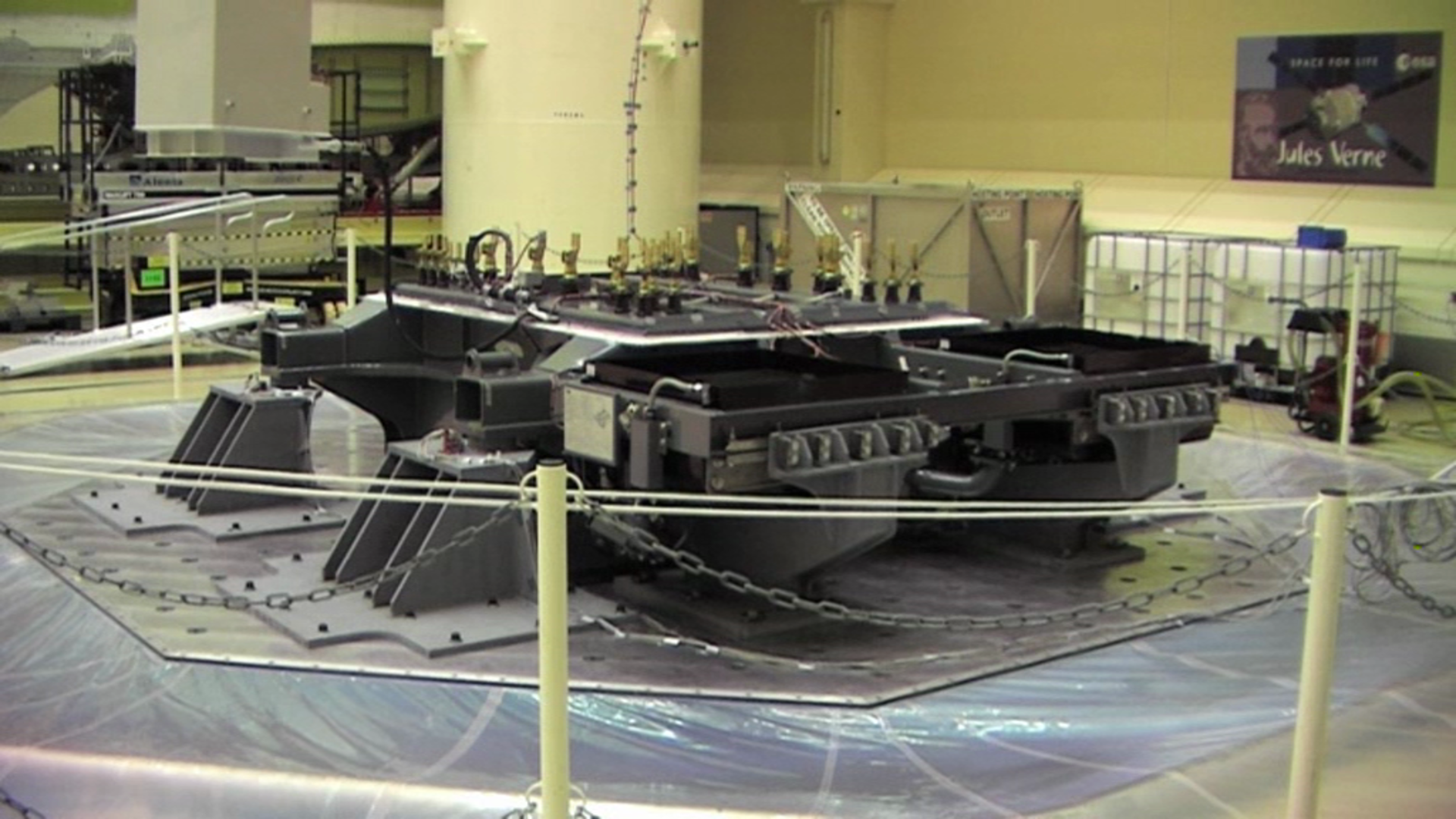Hydra
The ESTEC Test Centre’s Hydra – short for Hydraulic Multi-axis Shaker – is the most powerful and most precisely-controllable of several such shaker tables at the site.
Hydra serves to simulate the extreme vibration experienced during the first few minutes of a rocket launch, to ensure that satellites and their component parts will not be shaken to pieces during their actual flight to orbit.
The facility can shake test items weighing up to 23 tonnes, generating accelerations of 0.02 – 5 Earth gravity. Overall, Hydra is capable of generating vibrations equivalent to upwards of a Magnitude 7 earthquake.
From above the Hydra appears quite modest. Its visible part is just a 5.5 x 5.5 m octagonal aluminium plate lying flush with the floor. But this plate is only the top surface of an 18-tonne table that is moved by eight hydraulic actuators and braced by shock absorbers to prevent vibrations disturbing the rest of the ESTEC Centre.


Access the video
Effectively the table is moved in the same way as a full-scale flight simulator. Hydra’s motion is overseen by a network of 36 parallel computers, allowing it to follow complex preprogrammed courses, random shock vibrations or gradually rising or falling ‘sine’ patterns to take the test item through the full spectrum of vibrations, to check for potential harmful internal resonances.
In addition, up to 16 additional ‘notching sensors’ can limit the excitations to ensure the safety of the test item. Test results can be recorded by up to 512 separate data channels.
Installed in 1996 and refurbished in 2011, Hydra has served many of Europe’s largest space missions, including Envisat – at eight tonnes the largest ever civilian Earth observation satellite – Herschel and the ATV, which weighed 22 tonnes with its propellant tanks full.


Access the video


